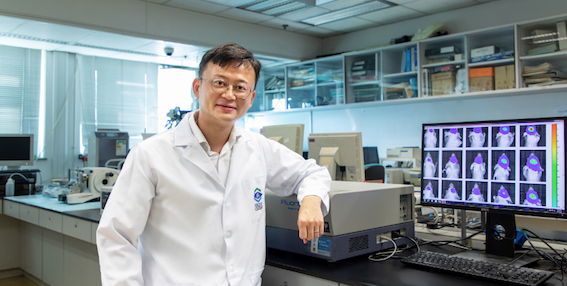
A Hong Kong Baptist University (HKBU) collaborative research team, along with researchers at Hong Kong Polytechnic University, has synthesised a nanoparticle named TRZD that can perform the dual function of diagnosing and treating glioma in the brain.
It emits persistent luminescence for the diagnostic imaging of glioma tissues in vivo and inhibits the growth of tumour cells by aiding the targeted delivery of chemotherapy drugs. The nanoparticle offers hope for the early diagnosis and treatment of glioma, especially cerebellar glioma, which is even harder to detect and cure with existing methods.
Glioma is the most common form of malignant primary brain tumour, and it accounts for about one-third of all brain tumours. Magnetic resonance imaging (MRI) is commonly used to diagnose glioma, but the technology is not that sensitive. Doxorubicin, a chemotherapy agent, is an effective treatment for glioma. However, its application may also damage normal cells, and it is associated with a range of side effects.
“We concluded that TRZD demonstrates promising potential, and it could be developed into a new generation of anti-glioma drugs that can perform the dual function of diagnosis and treatment. It also offers hope for the development of treatment protocols for other brain diseases”, said Dr Wang Yi, Assistant Professor of the Department of Chemistry at HKBU (seen in the image).




